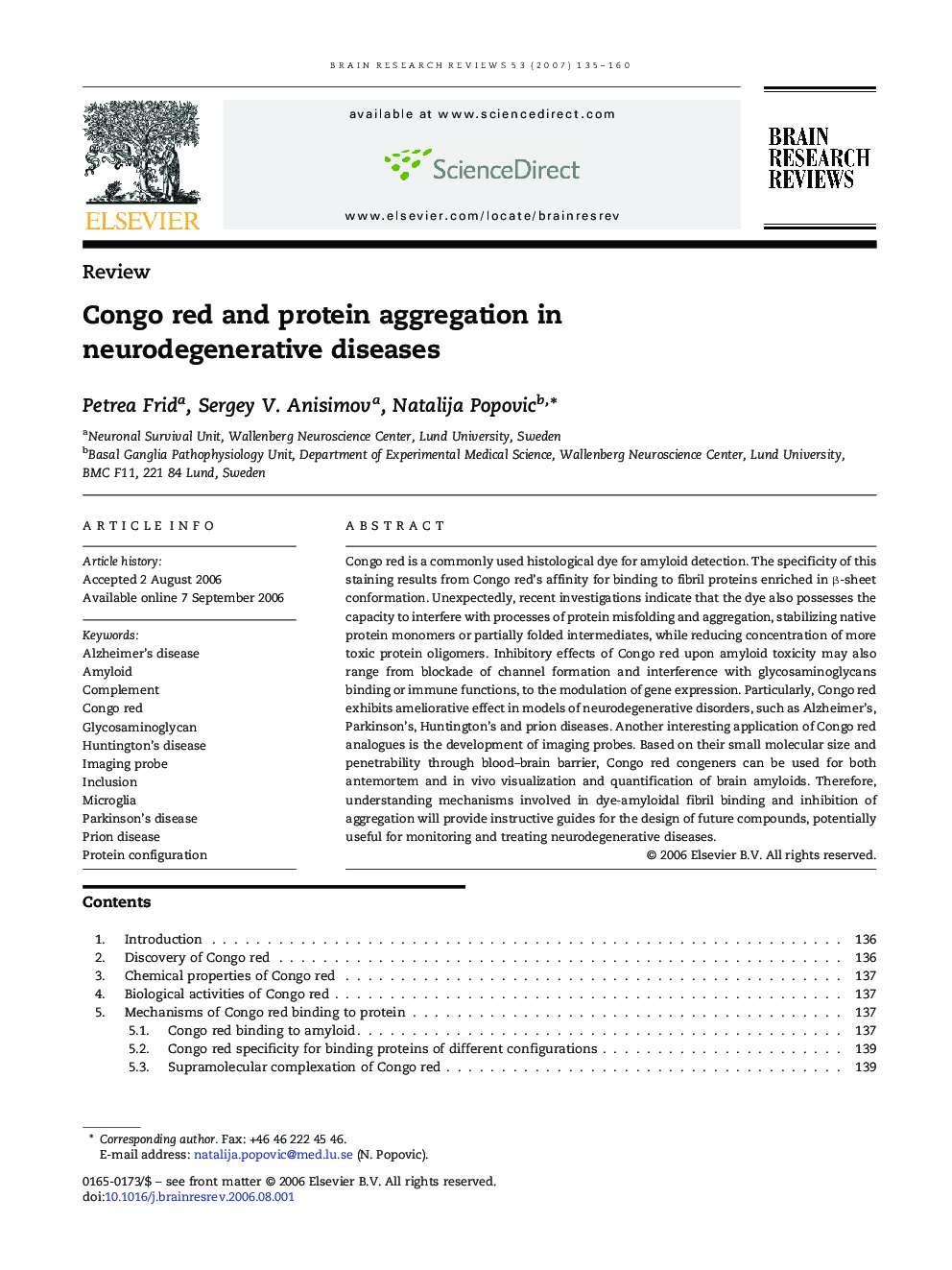| کد مقاله | کد نشریه | سال انتشار | مقاله انگلیسی | نسخه تمام متن |
|---|---|---|---|---|
| 4334033 | 1294764 | 2007 | 26 صفحه PDF | دانلود رایگان |

Congo red is a commonly used histological dye for amyloid detection. The specificity of this staining results from Congo red's affinity for binding to fibril proteins enriched in β-sheet conformation. Unexpectedly, recent investigations indicate that the dye also possesses the capacity to interfere with processes of protein misfolding and aggregation, stabilizing native protein monomers or partially folded intermediates, while reducing concentration of more toxic protein oligomers. Inhibitory effects of Congo red upon amyloid toxicity may also range from blockade of channel formation and interference with glycosaminoglycans binding or immune functions, to the modulation of gene expression. Particularly, Congo red exhibits ameliorative effect in models of neurodegenerative disorders, such as Alzheimer's, Parkinson's, Huntington's and prion diseases. Another interesting application of Congo red analogues is the development of imaging probes. Based on their small molecular size and penetrability through blood–brain barrier, Congo red congeners can be used for both antemortem and in vivo visualization and quantification of brain amyloids. Therefore, understanding mechanisms involved in dye-amyloidal fibril binding and inhibition of aggregation will provide instructive guides for the design of future compounds, potentially useful for monitoring and treating neurodegenerative diseases.
Journal: Brain Research Reviews - Volume 53, Issue 1, January 2007, Pages 135–160